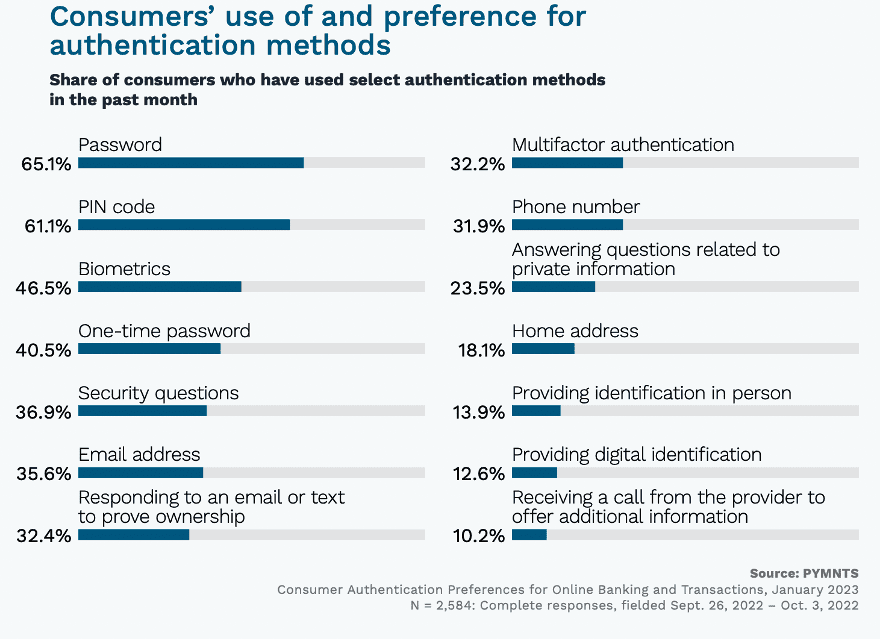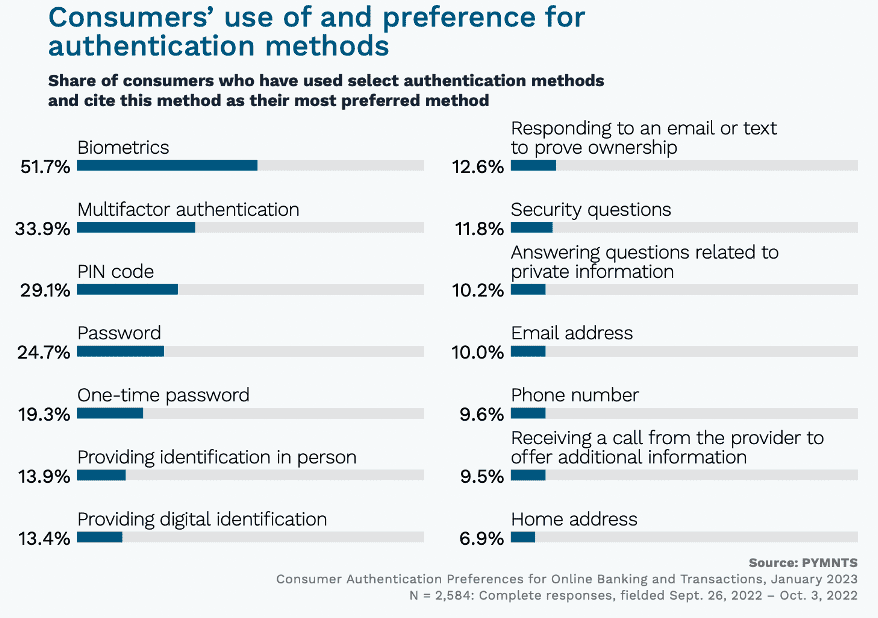Biometrics Emerge as Consumers’ Favorite Form of Authentication

The traditional password remains the most common authentication method modern consumers use for online transactions.

This, as new PYMNTS and Entersekt research in the January “Consumer Authentication Preferences for Online Banking and Transactions” report revealed that for most, they wish it weren’t.
The contemporary digital banking evolution marches on, and consumers are making more online financial transactions than ever before. In the face of constant security threats, PYMNTS’ research showed that one in every two U.S. consumers said their banks should offer additional security measures, especially for non-routine transactions.
This is the case even though most consumers (83%) simultaneously reported feeling satisfied overall with the level of security their financial institutions (FIs) provide.
In other words, banks tend to meet basic online security expectations but fall short of delivering the security options and features their customers prefer.

Driving this foundational authentication evolution is the fact that nearly three times as many U.S. consumers now prefer to access their bank accounts using smartphones rather than computers — with most respondents (57%) viewing their smartphones and personal computers as equally secure for undertaking online financial activities.
At the crux of the growing divide between consumer authentication preference, and their commonly used authentication solutions, is the fact that most modern consumers now see biometric tools, which smartphones conveniently provide, as the most secure way to authenticate a transaction.
It is also the most preferred authentication method for more than half of U.S. consumers surveyed by PYMNTS.
In what may represent a so-called changing of the guard, 52% of consumers who use biometrics prefer the authentication method over other options, while only 25% of consumers who use passwords feel as positive about passwords.
For banks to maintain customer satisfaction and drive long-term retention, it’s important for them to explore integrating those emergent, next-generation fraud prevention and identity authentication solutions their customers prefer most.
